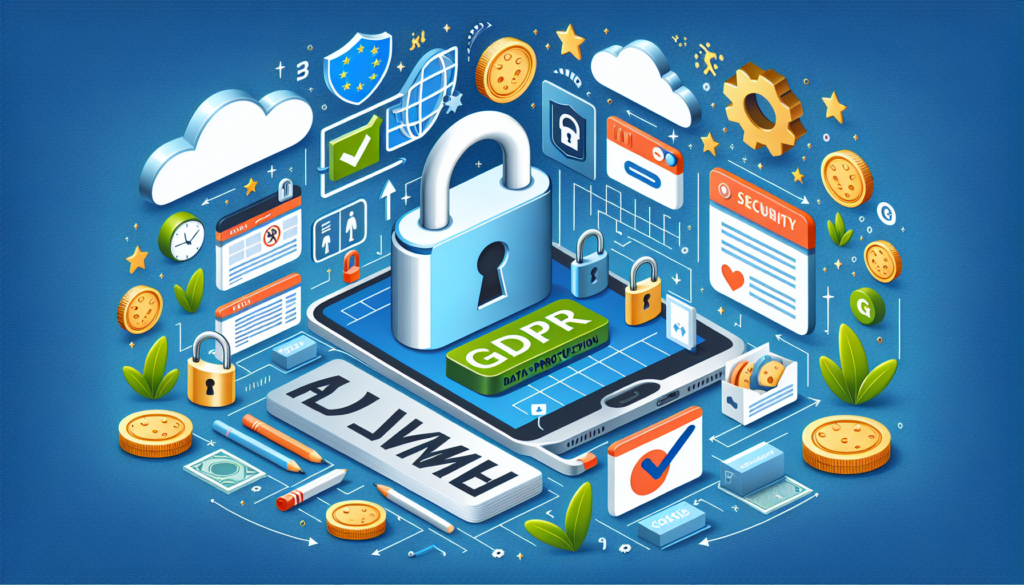In the current digital ecosystem, personal data protection has emerged as a cornerstone of trust and security online. The introduction of the General Data Protection Regulation (GDPR), applicable since May 2018 in the European economic area, marked a milestone in the regulation of privacy and the processing of personal data, raising the standards of protection and granting citizens control over their personal information. This regulation imposes on website owners the obligation to adapt their platforms to ensure compliance with these guidelines. In this article, we will delve into the technical and methodological aspects that web managers must consider to effectively adapt their websites to the GDPR and meet the expectations of a specialized audience.
GDPR Compliance Assessment
Personal Data Inventory:
Before implementing changes on a website, it is essential to conduct a comprehensive inventory of the personal data that is collected, stored, and processed. This includes mapping of forms, cookies, logs, and any other data collection methods. The goal is to have a clear and detailed understanding of every point of interaction with personal data.
Information Classification:
Personal data vary in sensitivity, so establishing categories such as identifying data, contact information, financial information, etc., is crucial. The nature of the data will affect the security measures and handling protocols that must be adopted.
Privacy Policy
Clarity and Accessibility:
Aligned with the GDPR’s principle of transparency, the privacy policy must be clearly accessible and written in simple language. It should detail the practices of collection, use, conservation, and protection of data, including information about third parties with whom the information may be shared.
Active Consent:
The GDPR stipulates the need to obtain clear and specific consent for the processing of personal data. It is essential to incorporate mechanisms that allow users to grant or deny their consent unequivocally before any processing of their data begins.
User Rights:
Websites must facilitate the exercise of users’ rights, such as the right to be forgotten, data portability, rectification, and to oppose or limit processing. An accessible and efficient means must be provided for users to manage these rights.
Data Security
Protocols and Encryption:
The implementation of complex technical security measures is indispensable. This includes data encryption protocols, robust authentication systems, and the use of HTTPS to ensure the integrity and confidentiality of information transmitted online.
Data Protection Impact Assessment (DPIA):
In cases of data processing that may result in high risk to the rights and freedoms of individuals, it is mandatory to conduct a DPIA. It assesses, identifies, and mitigates risks related to the processing of personal data.
Management and Accountability
Record of Processing Activities:
A detailed record of data processing activities must be maintained, identifying the purpose of the processing, the categories of data subjects, and the third parties to whom the data is disclosed.
Data Protection Officer:
Under certain circumstances, the GDPR requires the designation of a Data Protection Officer (DPO). This figure is responsible for overseeing the data protection strategy and compliance and acts as a point of contact with the supervisory authorities.
Continuous Maintenance and Audits
Updates and Training:
Keeping the web team informed and trained on the latest GDPR updates and other relevant regulations is crucial for ongoing compliance maintenance.
Regular Audits:
Conducting periodic audits and compliance tests is essential. These practices help to identify and correct potential deviations or security gaps before they become legal or image problems.
Specific Technical Considerations
Cookies and Tracking:
Cookie management must be altered to allow users to choose an acceptable level of tracking for them. This includes the possibility of rejecting all non-essential cookies for the website’s operation.
Application Programming Interfaces (APIs):
APIs that handle personal data must be designed by observing the data minimization principle and ensuring that third-party applications also comply with GDPR standards.
Data Storage:
Procedures must be established that ensure the secure deletion of personal data that is no longer necessary, as well as protection against unauthorized access during storage.
This article has thoroughly addressed adapting a website to GDPR regulations, from the initial review, internal and external policies, to the technical implications of data management. With the correct implementation of these practices, website owners can not only avoid legal penalties but also reinforce user trust and improve corporate reputation in an era where privacy is an essential commercial value.

